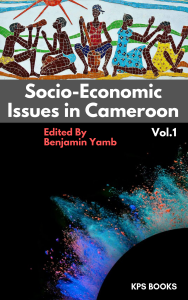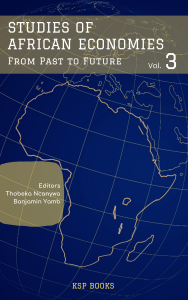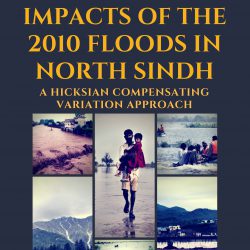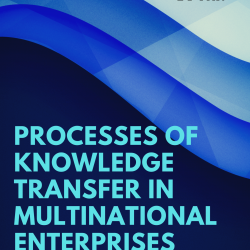Welcome to the KSP Library’s books board.
Please check out these featured books selected by our KSP Library team. Please peruse some of our featured book lists if you’re looking for something new! The KSP Library Featured Book program allows your book along side 10 others to feature as the ‘Book of the Quarterly’ on the front page of our website.
By Charis Vlados (Editor)
We are experiencing a phase of profound restructuring of globalization nowadays, manifested through a wide variety of crisis symptoms, articulated at the same time upon the economic, political, social, and environmental spheres. Everything shows that the movements of the world’s “tectonic plates” are re-shaping the existing geo-economic and geopolitical balances on the planet drastically, causing new challenges to emerge, as well as new opportunities and threats for all stakeholders and participants in the global socioeconomic system.
Therefore, the current global crisis and restructuring are taking shape within a precarious state of affairs. In virtually every corner of the globe and an expanding number of cases and situations—both directly and visibly, both indirectly and subversively—old problems seem to return and become more challenging than yesterday. At the same time, new socioeconomic issues emerge and spread rapidly, without making it possible to find and implement effective, sustainable, and generalized long-term solutions on a global scale.
By Don Augusthinus Lamaech Flassy
In particular, the volume contains three chapters: I. Constitution Vis-A-Vis Constitution Indonesian 1945 Versus Papuan 1999. There is tolerance merger of Unity in Diversity versus solidarity merger of Togetherness in Diversity as poles of spanning the natural and engineering efforts are not natural to make or maintain existing fused together. Shown by the spirit of Indonesia’s 1945 Constitution versus Papua’s 1999 Constitution. This article titled “Constitution vis-à-vis Constitution: Indonesia 1945 versus Papua 1999” is intended to demonstrate the existence of each of the philosophical as well as the feasibility of correlation between the two as cause and effect in supporting the blare political action which is: “The Roadmap to the Revival of the Papuan Nation in West Papua: “A Peaceful Decision on the Restoration of the Self”. Affair have been taken place, namely through the Third Papua People’s Congress (Kongres Rakyat Papua Tiga/KRP-3), October 16-19, 2011, where the Nation of Papua has announced Unilateral Declaration of Independence of the Nation of West Papua/UDI-Papua and formation of The Federal Republic of West Papua/FRPB (Negara Republik Federal Papua Barat/ NRFPB) back to and continuing the Political Status of December 27nd 1949 to December 1st, 1961 (after RTC of The Hague to Political Manifesto of Papua). This is the status before Papua being occupied by Indonesia at change of International conspiracy.
By Lingling Wang, Aysun Ficici, Bo Fan
This book aims to explore one of the most important aspects of knowledge management, knowledge transfer in multinational enterprises (MNEs). It examines this knowledge transfer process from two distinct perspectives: intra-firm and inter-firm. Intra-firm transfer of knowledge refers to the knowledge flow between headquarters and subsidiaries and inter-firm transfer is defined as the knowledge transfer between partners in international joint-ventures (IJV). Specifically, it attempts to investigate the factors that influence the intra-firm knowledge transfer process and the willingness to share knowledge between partners in IJVs, in order to improve the performance of MNEs. Since willingness to share knowledge between partners is more complex than that between parent and subsidiary due to the difference in ownership structure, if MNEs can manage the willingness to share knowledge in IJVs, then dealing with it between parent and subsidiary should be much easier.
By Bachar Fakhry
After five years of research into the hot debated and my chosen topic of behavioural finance, it has become obvious that the field is a major area of studies. Over the years I have tried to provide empirical evidence that markets do tend to follow trends set by theories of behavioural finance. The evidence I presented surround the key events since the millennium; events such as the introduction of the euro, the global financial and eurozone sovereign debt crises and Brexit. As can be seen from these events, I have tended to mainly concentrate on the reaction of market participants in the European Union.
By Benjamin Yamb (Editor)
In a situation of bank credit rationing, SMEs have the most recourse to short-term financing. In order of preference, these include tontines, microfinance institutions, business-to-business loans, carers, friends’ helpers, current associate competitions, leasing institutions, associations, and associations, increase in capital. This order corresponds almost to the most sought after alternative financing methods. There is therefore a financial equilibrium problem when it comes to meeting the long-term and medium-term needs of SMEs. To respond to this concern, we have proposed alternative financing methods to SMEs, specifying their order of preference, which SMEs can use in rationing bank credit. Other proposals for banks and public authorities have also been made to improve bank financing for SMEs.
By Maggie Kgomo & Thobeka Ncanywa
Brazil, Russia, India, China and South Africa (BRICS) are distinguished as having the fast growing markets in the universe compared to other markets of emerging economies, according to their promising economic prospective and demographic power. This study investigated the effects of government stock on investment activity in BRICS countries. This study used panel autoregressive distributed lag model (PARDL), Engel-Granger causality test, impulse response functions (IRF) and variance decomposition tests. Such techniques were applied to the annual data for the periods 2001 to 2016 in order to determine the effects of government stock on investment activity. The PARDL showed that in the long-run investment activity was positively influenced by government stock on mutual banks and government stock on liquid assets, and negatively related to government stock on bonds and government stock on corporations. The Engel-Granger causality test revealed existence of unidirectional movement between investment activity and government stock on corporations as well as from government stock on bonds to liquid assets.
By Thobeka Ncanywa & Benjamin Yamb
Financial statements have become important sources of information about company performance in order to assess its financial stability and potential growth. However, additional information may be hidden on the interpretation in the values contained by financial statements. The study aims to assess financial performance with a case study of a company listed in the Johannesburg Stock Exchange utilizing financial statements and further investigate whether companies present their results precisely. The study intends to conduct an analysis on a company competitive positioning, valuation and financial stability. The results indicated that this case study’s financial statement could be beneficial for assessment of company performance.
By Ana Paula Martins
This chapter explores the dynamic potential of point-wise utility functions optimization of representative agent economies. Such functions were generically considered to depend upon current consumption and wealth to be made available for next period usage or income generation, implying an endogenous (pseudo-)rate of time preference. At first inspection, the framework reproduced closely the dynamics and steady-state properties of the traditional Solow-Swan and Ramsey models – with population growth, exogenous technical progress, land, or increasing returns to scale – as well as, when human capital/knowledge was introduced, the Lucas-Uzawa endogenous growth set-up. General uncertainty – simulated at different decision stages – resulted in intuitively appealing solutions. Overlapping optimization of the capital stock generated forward-looking recursive dynamics. Homothetic preferences (CES or generalized Cobb-Douglas) – implying a constant consumption-(lead)wealth ratio along an optimal path and resulting in steady-state saving rates independent of CRS technologies features in simple structures -, were assumed for illustration, and also generic separable forms in the arguments. The latter were useful under uncertainty, allowing the inspection of the role of risk-aversion and diminishing marginal returns to capital in equilibrium and steady-state determination.




































































